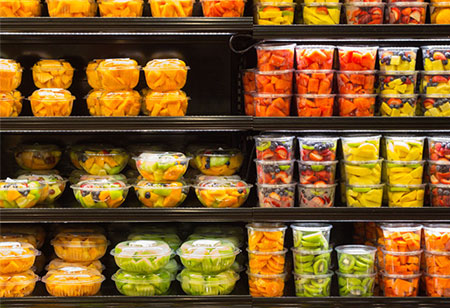THANK YOU FOR SUBSCRIBING
Be first to read the latest tech news, Industry Leader's Insights, and CIO interviews of medium and large enterprises exclusively from Food and Beverage Tech Review
How Can Packaging Technology Alleviate the Worry of Food Safety?
Today, food safety has become a topic of concern for the food industry. With so much contamination, how they are going to deal with this issue?

By
Food and Beverages Tech Review | Thursday, November 28, 2019
Stay ahead of the industry with exclusive feature stories on the top companies, expert insights and the latest news delivered straight to your inbox. Subscribe today.
Today, food safety has become a topic of concern for the food industry. With so much contamination, how they are going to deal with this issue?
FREMONT, CA: In today’s market, meeting the requirements of the Food Safety Modernization Act (FSMA) and verifying the safety of snacks and baked food products is paramount. Besides, choosing the right kind of technology for the job can be critical. It is very crucial to source appropriate inspection and detection technology for every application to ensure that products are not adulterated.
FSMA has mandated that manufacturers must detect hazards, introduce preventive controls for eradicating or minimizing the risks, determine process parameters for these controls and then apply and continue to supervise the process for ensuring that appropriate actions are taken to the system’s verification. Physical hazards’ preventive controls include metal detectors and X-ray detection systems built for food products.
One of the biggest challenges the food industry has to face when it comes to using metal detectors for baked items is the ‘product effect.’ This happens when a product possesses a conductive property that impacts the magnetic field generated by the metal detector. This is found in high moisture, high salt product environments like warm bread from the oven. The warm bread combined with the high salt content can affect the metal detector’s potential to differentiate between original non-ferrous metal contaminants and the wrong signal given by the amalgamation of typical characteristics. In these circumstances, X-ray equipment generates the desired results as product effect is not a factor.
Besides, most products like cakes and pies are packaged in aluminum foil pans. Hence, the ingredients and dough can be examined by metal detectors easily. However, X-ray inspection is needed after the pie is placed into a folding carton or pan.
Typically, metal detectors function well with frozen baked foods that don’t have product effect that ‘just out of the oven’ products do. The trick is to make sure that the freezer is efficacious and is holding the product at the appropriate temperature. If an item is not entirely frozen, the detector sees its unfrozen center as a piece of metal.
However, today, most of the snack foods are packaged in a metal film, which makes these package not good candidates for metal detectors.
So it is vital for the food industry should focus on choosing the appropriate innovation for each baking and snack food application since it is very crucial to food safety.
I agree We use cookies on this website to enhance your user experience. By clicking any link on this page you are giving your consent for us to set cookies. More info







